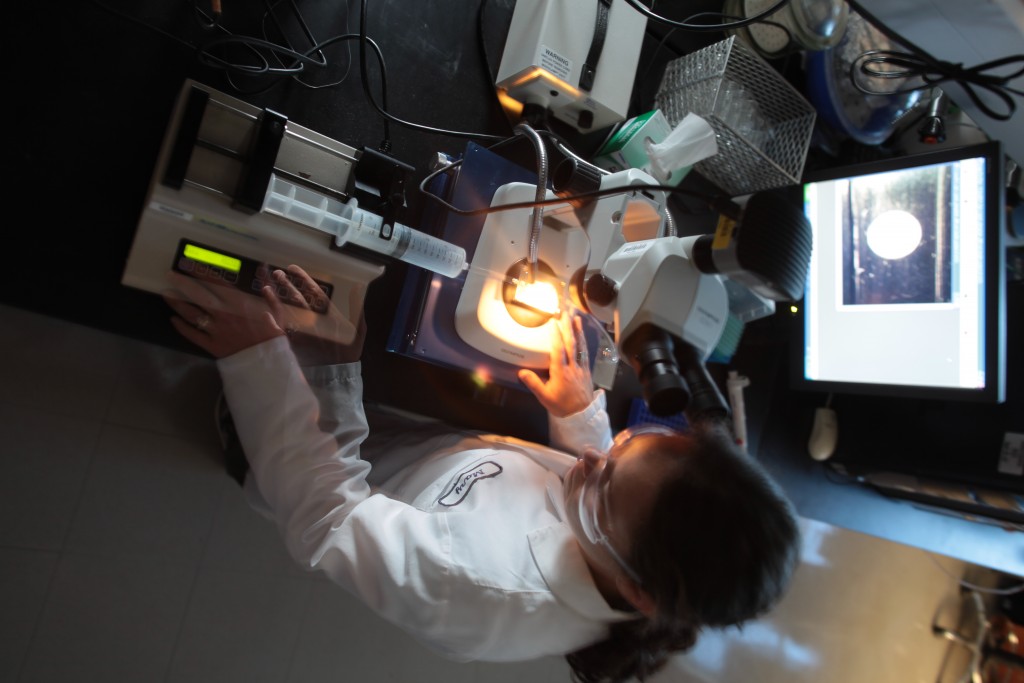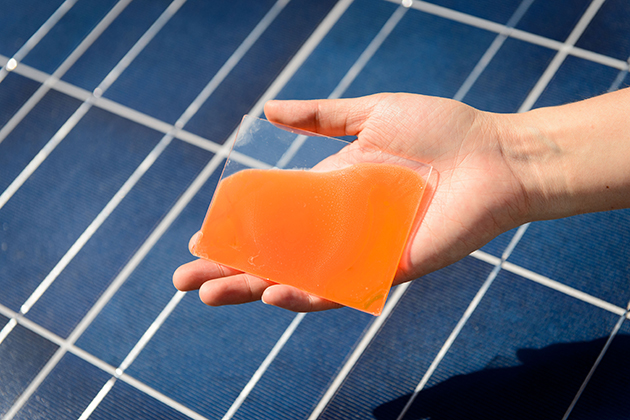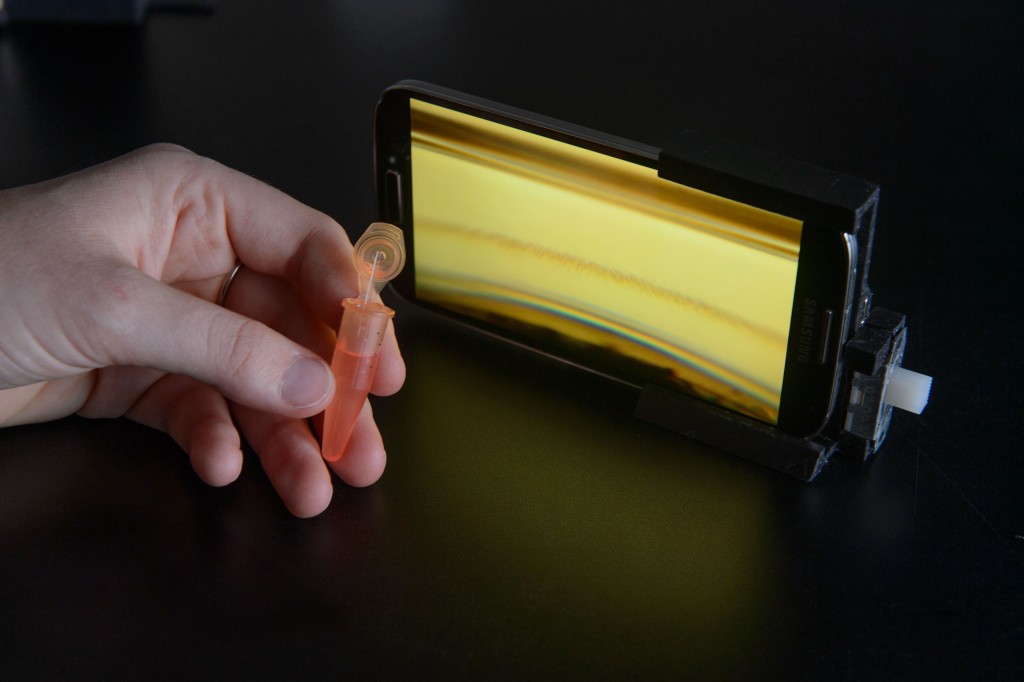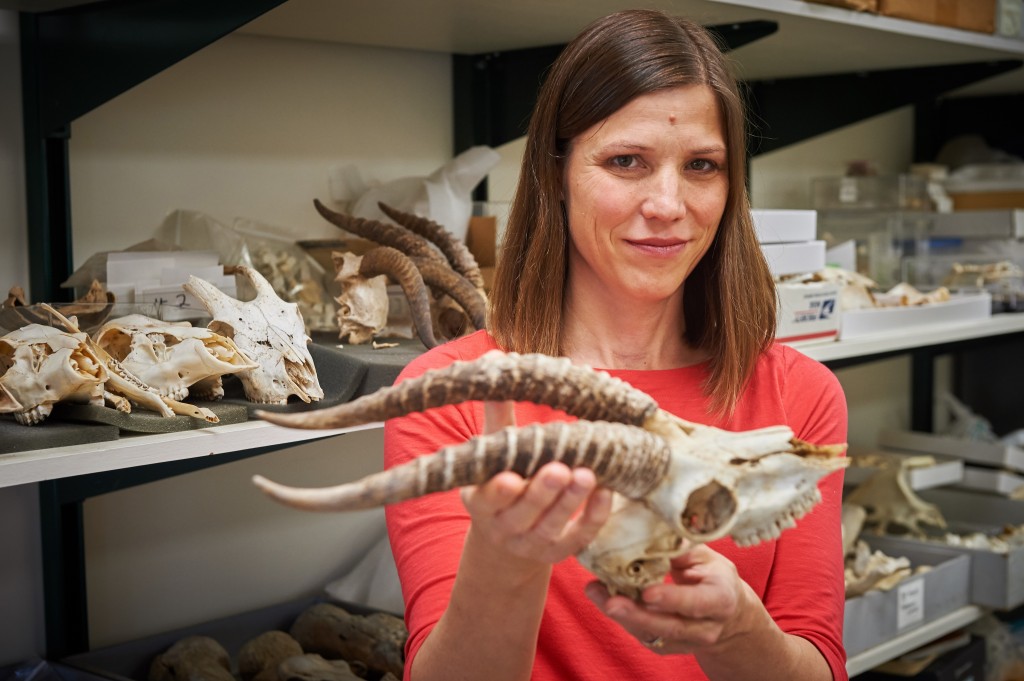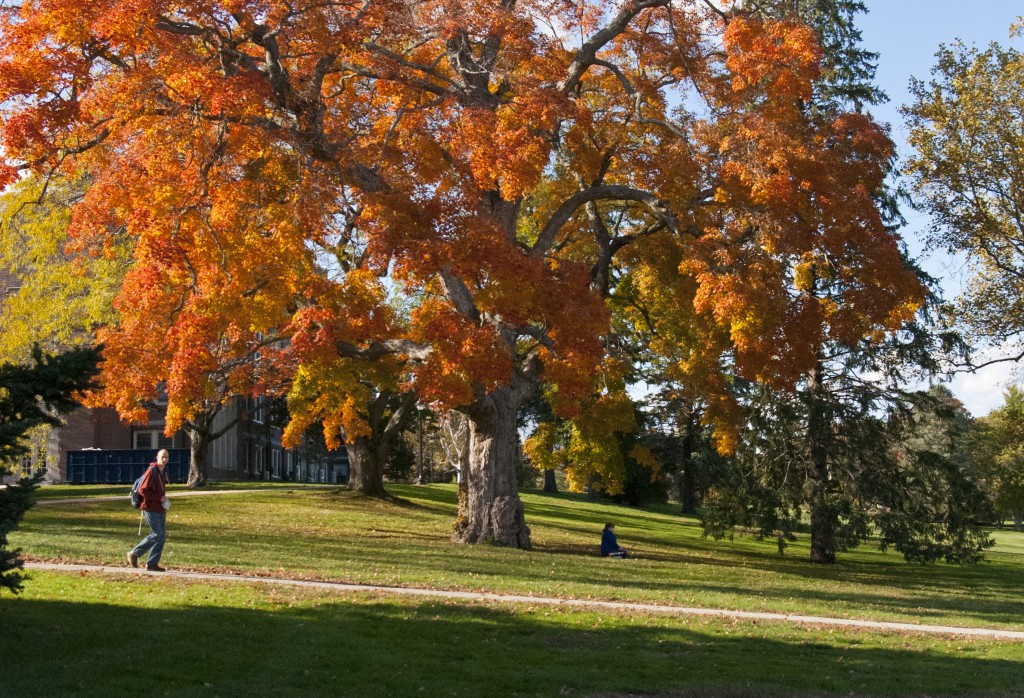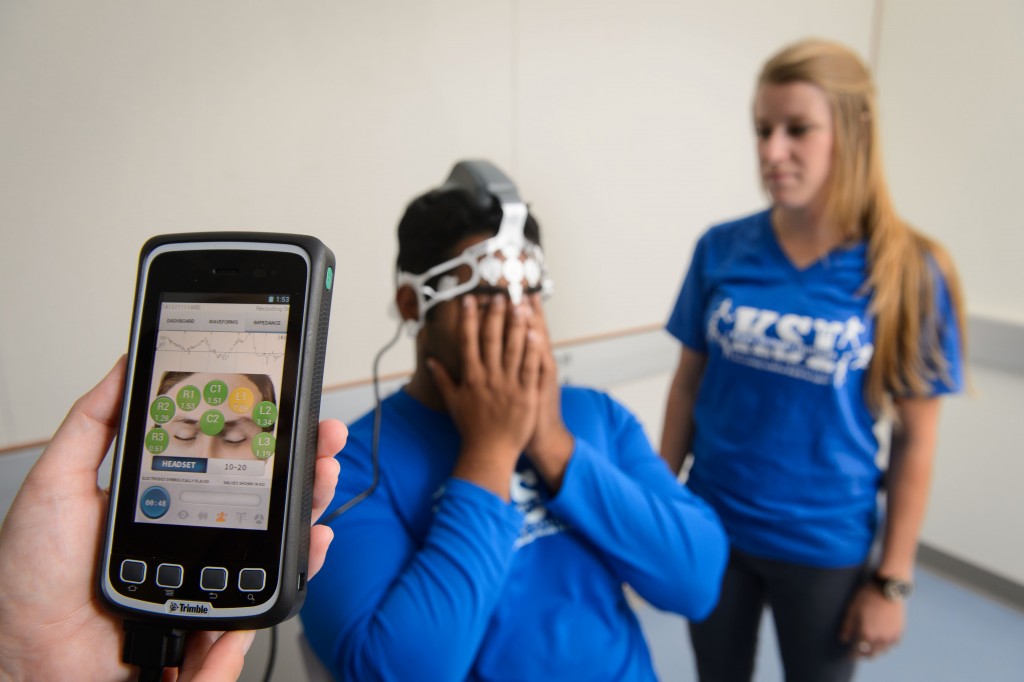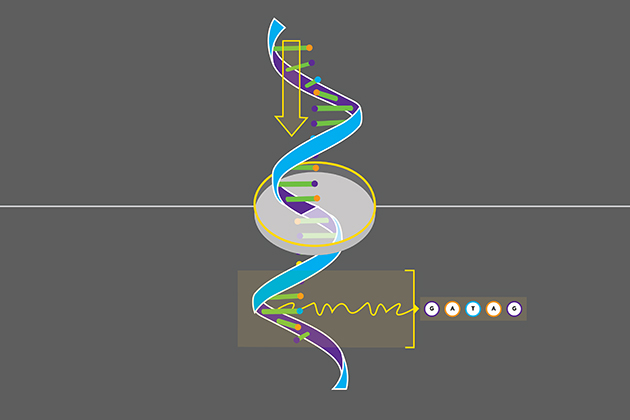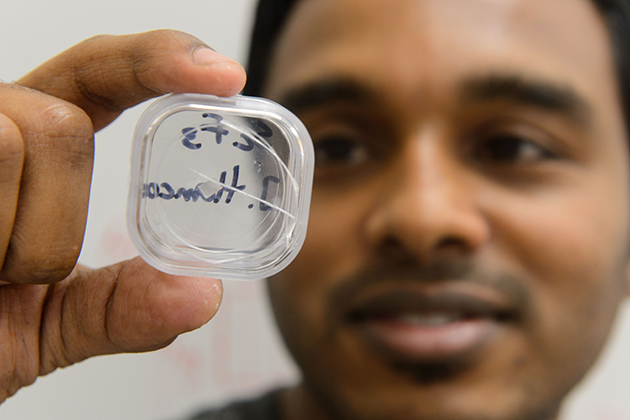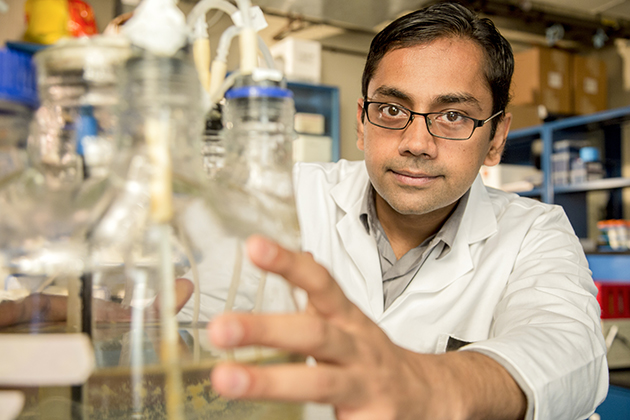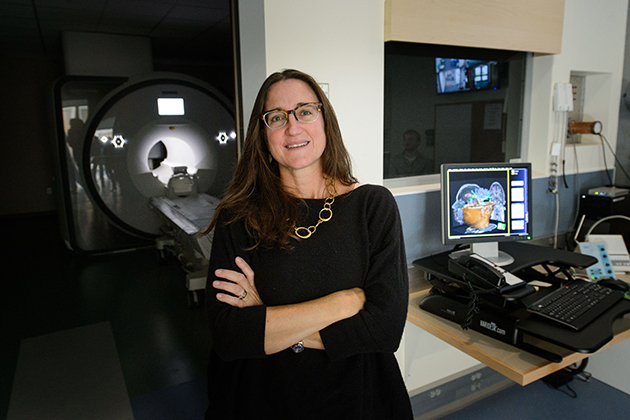Research & Discovery
Research
A glimpse into various fields of research across many of UConn's campuses.
November 8, 2015 | Sean Flynn
Boosting the Efficiency of Solar Panels
UConn chemistry professor Challa Kumar has developed a substance that enhances the ability of solar cells to absorb energy from sunlight.
October 26, 2015 | David Bauman
An Easy Test for Sickle Cell Disease
A new device that can be attached to a smartphone uses magnetism to detect sickle cell disease – a critical need in regions of the world where advanced technology and training are scarce.
October 22, 2015 | Colin Poitras
A Bare Bones Approach to Understanding Human Behavior
Anthropologist Natalie Munro has assembled a collection of animal bones from archaeological digs and recent roadkill for teaching students about long ago societies.
October 21, 2015 | Elaina Hancock
Climate Change Could Affect Fall Foliage Timing
A century from now, autumn in New England may happen earlier in some places and later in others, according to a new UConn study.
October 20, 2015 | Christine Buckley
Assessing Traumatic Brain Injuries
UConn researchers are testing a new device that can quickly assess concussions and other traumatic brain injuries.
October 14, 2015 | David Bauman
A Better Way to Read the Genome
UConn researchers have sequenced the RNA of the most complicated known gene, using a hand-held sequencer no bigger than a cell phone.
October 9, 2015 | Kim Krieger
Caution: Shrinks When Warm
Most materials swell when they warm. UConn physics researchers have been investigating a substance that responds in reverse.
October 6, 2015 | Kim Krieger
UConn Alum Named MacArthur Fellow
Environmental engineer Kartik Chandran ’99 Ph.D. is one of 24 individuals recognized this year with a MacArthur ‘genius grant.’
October 1, 2015 | Combined Reports
A Cognitive Shift
A psychology researcher and her students are using UConn's new fMRI scanner to better understand autism spectrum disorders.
September 29, 2015 | Cindy Wolfe Boynton
